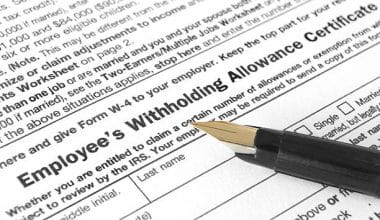The way that each state handles taxes varies slightly, and where you live can have a big effect on your finances. Your capacity to make ends meet can be aided or hampered by where you reside. Your disposable income is being eaten away by a plethora of taxes on property, licenses, state, and local sales, property, inheritance, estates, and gasoline excise taxes. You may stretch your cash by comparing your financial situation to the tax landscape. The dispute has only gotten more heated with the rising trend of remote work and the perception that you’re not always linked to the same region as your company, even though people have long weighed the cost of living and taxes when deciding where to move. We highlight the most tax-friendly states for retirement, high-income as well as middle-class for those considering a move in 2023.
Retirement Tax-Friendly States
We all wish for excellent health, leisure, and relaxation throughout our retirement years. Acquiring enough money to live independently and keep a full social schedule is necessary for maintaining an active social life. Reaching lifestyle objectives requires taking into account the cost of living in each area, and retiring to a tax-friendly state allows you to make the most of your retirement funds.
By relocating to any of the tax-friendly retirement states, retirees can extend the life of their investments. These states don’t impose taxes on pensions or perhaps Social Security income. Yet, according to information from Wolters Kluwer Tax & Accounting, the Tax Foundation, and the U.S. Census Bureau, they have considerably varying property and sales tax rates, which should also be taken into account.
If you’re looking for a place to call home, you might want to consider one of the below seven states that are basically tax-friendly.
#1. Alaska
The number one retirement tax-friendly state on this list las the least expensive state for senior citizens to live in is Alaska. Inheritance, estate, and income taxes are all exempt in Alaska. Also, the average state and local sales tax are wonderfully low. Although there is no statewide sales tax, individual neighborhoods do levy one at a location-specific rate. According to the Tax Foundation, Alaska’s sales tax is generally 1.76%, but in some places, it is as high as 7.50%.
Retirees who constantly like to be on the road will value Alaska’s cheap gas tax. Its price per gallon is the lowest in the nation at just $0.09.
Nonetheless, at 1.19 percent of their home’s value, the typical property tax in this state is among the highest in the US. In Alaska, a retiree might anticipate paying $3,231 in property taxes on a $270,400 house. As a component of the state’s oil revenue, Alaska distributes an annual dividend check to people who have resided there for a year to help cover these expenses. The total payout in 2022 was $3,284.
#2. Florida
Estate, inheritance, and state income taxes are nonexistent for Floridians. Retirement income in the form of Social Security, pensions, or IRA/401(k) distributions are also not subject to taxation in Florida.
In Florida, the combined average state and municipal sales tax rises to 7.01%; however, prescription medications and groceries are excluded. Florida retirees are also shielded from sticker shock at the pump because gas prices are lower here than in most other states.
Property taxes in Florida are comparable to the 0.89% national average, and seniors who meet certain requirements can take advantage of a number of exemptions. For a $215,300 house, the typical Floridian would be required to pay property taxes of $1,914.
#3. Nevada
Retirees can choose from a variety of tax breaks in Nevada. To begin with, retirees can keep more of their hard-earned money thanks to Nevada’s lack of state income, estate, or inheritance tax. The property tax rate is significantly lower than the national average, coming in at the seventh lowest in the United States. The annual property tax bill for a $267,900 home in Nevada would be only $1,614 under the current rate.
However, for those who have already started packing, be aware that Silver State has somewhat high sales taxes. In some areas, they can be as high as 8.23%, however, food and prescription medications are exempt. Cheap gas makes a vacation to Sin City affordable, but we can’t promise you’ll win big at the tables.
#4. South Dakota
It’s fantastic news for retirees because South Dakotans are exempt from income tax. This implies that tax-free retirement income includes Social Security, pensions, and other sources as well. Although groceries and apparel do carry a sales tax, residents in Mount Rushmore State will welcome having a lower sales tax than the national average, especially when compared to their neighbors to the north.
Most homeowners pay 1.31% of their home’s value in property taxes, which is about average nationally. Taxes on a home worth $167,100 normally cost $2,195 per year. Seniors who meet certain requirements, however, can use a number of the state’s property tax credits to defray this expense.
Last but not least, South Dakota’s reasonable petrol and diesel taxes is one to be happy about. The cost of gas won’t be any higher than the national average for those who want to enjoy the region’s natural wonders.
#5. New Hampshire
Since it is the only state in New England that does not impose an income tax, New Hampshire should be high on retirees’ list of desirable locations. There are also no federal, state, or local income, sales, or estate as well as taxes. Moreover, through 2027, the 5% tax on dividends and interest will gradually disappear.
Nevertheless, retirees in New Hampshire aren’t entirely burden-free. Because it has the third-highest property tax rates in the nation, New Hampshire is lower on our list than other states. An annual interest rate of $4,636 on a $249,700 house is equal to an average of 1.86%. Those over 65 meanwhile may be eligible for additional benefits.
#6. Wyoming
Wyoming is a wise financial choice for existing or future retirees due to the absence of any state income tax, estate tax, or inheritance tax, as well as the state’s low sales tax. The paltry sales tax that locals pay is lower than that of practically every other state. Furthermore tax-free are groceries and prescription medications, which lowers costs for regular purchases.
Wyoming in addition is among the states with the lowest median property tax rates in the nation, so land enthusiasts should keep that in mind. Property taxes for a $220,500 home would cost $1,337 for a retiree. While the average homeowner in Wyoming pays 0.61% of the home’s value.
#7. Delaware
Income tax rates in Delaware may be high enough to discourage seniors on a tight budget. However, the First State more than makes up for it in other ways. All retirement income is deductible up to $12,500 for those 60 and over, including Social Security benefits.
Delaware makes our ranking list of retirement tax-friendly states because its inhabitants do not have to pay sales taxes on any purchases. Retirees will also make domestic savings a priority, thereby saving and having money at home. The annual property tax on a $251,100 home is only $1,431, making it the sixth lowest in the country. In comparison to other states, Delaware does not charge a vehicle property tax, while gas taxes in this state are significantly higher than in other states.
What Is the Most Tax-Friendly State?
The below are the most tax-friendly states as they are exempt from personal income tax
- Alaska
- Florida
- Nevada
- South Dakota
- Tennessee
- Texas
- Washington
- Wyoming
Which Us State Has the Lowest Taxes?
- Cheyenne, Wyoming
Cheyenne, Wyoming tops the list of American communities with the lowest tax rates, despite not being an apparent choice. The average tax rate for lower-income families in Cheyenne is 9.7%, which is low across the board.
What 5 States Have No State Tax?
Below are the 5 states in the United State that basically does not pay a state sales tax;
- Alaska
- Delaware
- Montana
- New Hampshire
- Oregon
What Is the Best State to Live In to Avoid Taxes?
States in the United State that does not levy state income tax include;
- Alaska
- Florida
- Nevada
- New Hampshire
- South Dakota, Tennessee
- Texas
- Wyoming
- Washington
Most Tax-Friendly States for Middle-Class
Basically, if you’re planning to relocate to a new state as a middle-class family, moving to one of the states, where the tax burden on middle-class families is low, could help you save a lot of money.
However, it is best to make sure you carry out your research on the entire cost of living in the new state of your choice before moving. It is basically essential you do these findings, including the effect of state and local taxes on middle-class families. Of course, it would be good to reside in one of the tax-friendly states as a middle-class household. But, how can you distinguish between the best and worst states for taxes?
As studies have shown, the overall state tax burden for the typical American family varies greatly. Depending on your family’s tax situation, the cost difference between residing in a high-tax state versus a low-tax state can be thousands of dollars per year.
To help you narrow your options, we listed below the top 10 tax-friendly states for middle-class families in the United States
Of course, there’s a strong probability that if you relocate to one of these tax-friendly states being middle-class, your overall state taxes will decrease.
- Alaska Taxes
- Arizona Taxes
- California Taxes
- Delaware Taxes
- Florida Taxes
- Nevada Taxes
- North Dakota Taxes
- Tennessee Taxes
- Washington Taxes
- Wyoming Taxes
Tax-Friendly States for High-Income
If you are a high-income earner wanting to minimize your tax liability, you may be considering relocation to one of the tax-friendly states. Besides, one option for a more enjoyable retirement is living in one of the top states that are tax-friendly; with no income tax.
Generally speaking, higher-income taxpayers in the United States pay a lower proportion of their income in state and local taxes than do lower-income taxpayers. A think tank in Washington, DC, claims that the 1% of high-income earners of American households pay only 7.4 percent of their annual income in state and local taxes. At the other end of the economic spectrum, low-income households pay an average of 11.4 percent, while middle-income families pay 9.9 percent.
While it may appear that U.S. tax policy favors the wealthy on the whole, the tax breaks enjoyed by the top 1% are considerably more pronounced in some states than in others.
Despite their differences, the most tax-friendly states for high income have several things in common. The highest-ranked states on this list all have very low or no income tax. When taxes that disproportionately affect the wealthy, like the income tax, are low, governments at the state and local levels must rely on alternative revenue sources, which often take the form of taxes that are a heavier burden for middle- and lower-class citizens.
While the rich may do better in some states than others, taxpayers of all means in the United States can take steps to limit their contributions to the federal, state, and local governments.
Here are the top most tax-friendly states for high-income in the United States;
- Florida
- Nevada
- Alaska
- South Dakota
- Tennessee
- Arizona
- New Hampshire
- Washington
- North Dakota
- Texas
- Alabama
What Are the 5 Highest Taxed States?
States in the United State with the highest taxes include;
- Hawaii
- District of Columbia
- Oregon
- New York
- California
- Massachusetts
- New Jersey
- Virginia
- Maine
- Maryland
- Minnesota
- South Carolina
- Connecticut
- Colorado
- Georgia
Conclusion
For the millions of Americans who owe money to the Federal government, tax season can be unpleasant. Generally, the typical American household pays about $11,000 in federal income taxes annually. Despite the fact that we are all subject to the same responsibility, state and municipal taxes range significantly. For example, taxpayers in the states with the highest tax burdens pay twice as much as those in the states with the lowest tax burdens.
The way that each state handles taxes varies slightly, so where you live might have an effect on your finances. Regardless, the above list and examples of tax-friendly states should be more than enough to choose what’s best for you either as a middle-class family, high income, or for retirement purposes.
Related Articles
- 10 MOST TAX-FRIENDLY STATES FOR RETIREES
- HOW MUCH IS AN INHERITANCE TAX? All You Need To Know
- What States Have No Income Tax: What You Should Know
- SALES TAX-FREE STATES IN UNITED STATES IN 2023
- HOW TO PAY TAXES: What You Should Know & Guide






